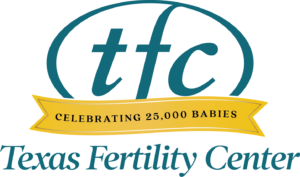
Some women can benefit from traditional fertility surgery
Occasionally during an infertility evaluation, our San Antonio fertility surgeons may find an abnormality in a woman’s reproductive organs that can be a cause of their infertility. Abnormalities like uterine fibroids, endometriosis, pelvic adhesions, and uterine polyps can alter either the structure or function of a woman’s pelvic organs – leading to infertility. Traditional fertility surgery can address these concerns and remove structural issues to improve one’s chance of having a baby.
Hysteroscopy is one type of traditional fertility surgery
Hysteroscopy is a type of traditional fertility surgery that our San Antonio fertility surgeons use to fix abnormalities within the uterine cavity, including endometrial polyps, fibroids, scar tissue (adhesions or Asherman’s syndrome) or developmental abnormalities like a uterine septum.
Our San Antonio fertility surgeons perform hysteroscopy in the operating room as an outpatient procedure. The procedure is performed under IV sedation, so the patient continues to breathe on her own. Therefore no breathing tube is placed in the patient’s throat and no ventilator is used. A small surgical telescope is inserted through the vagina and cervix into the patient’s uterus, so there are no incisions. The telescope provides very clear pictures of the uterine cavity so that the surgeon can see any abnormalities and correct them using small surgical instruments.
This type of traditional fertility surgery usually takes 15-45 minutes to complete, depending on the condition. Most women resume normal activities the following day.
Laparoscopy is a common type of traditional fertility surgery
Laparoscopy allows our San Antonio fertility surgeons to diagnose and treat most anatomic abnormalities of a woman’s pelvic organs during a minor, outpatient surgical procedure. Unlike the old days, when the only way to treat pelvic abnormalities was to make a 5-6 inch incision across the patient’s lower abdomen, we can now get even better visualization and provide complete treatment through a couple of incisions no larger than the tip of your finger.
During a laparoscopic procedure, our San Antonio fertility surgeons make an incision in the patient’s navel through which a surgical telescope and camera are inserted. One or two additional incisions are made just below the top of the pubic hairline in order to insert small surgical instruments that allow access to view and treat conditions in the pelvis that can interfere with pregnancy. These conditions can include endometriosis, pelvic adhesions, uterine fibroids and abnormalities of the Fallopian tubes.
Like hysteroscopy, laparoscopy is also performed as an outpatient procedure, allowing the woman to return home the same day. Procedures usually take about 1-2 hours, and patients can return to normal activity in 3-7 days.
Understanding open abdominal surgery
Although used much less commonly today, open abdominal surgery (“laparotomy”) was once the mainstay of pelvic surgery. This type of traditional fertility surgery involves either a bikini-line incision or a vertical incision from the bikini-line to the belly button. This incision provides the surgeon with access to all pelvic organs so that they can treat a variety of conditions that can affect fertility. Interestingly, due to the magnification and the excellent optics provided by laparoscopic cameras, surgeons can frequently get a clearer picture of the pelvic organs with laparoscopy than they can with a larger incision.
Currently, laparotomies are reserved for tubal anastomosis procedures (reconnecting Fallopian tubes after a tubal ligation) or to remove very large, bulky fibroids. Most women stay in the hospital overnight following this type of procedure. Recovery typically takes longer due to the larger incision; patients can return to normal activities in 2-4 weeks.
Robotic surgery is a leading-edge technique
Robotic surgery represents the latest advance in pelvic surgery. It allows our San Antonio fertility surgeons to address the issues that were historically treated using laparoscopy or open abdominal surgery. Such conditions include endometriosis, pelvic adhesions, fibroids and blocked Fallopian tubes.
During robotic procedures, our San Antonio fertility surgeons make several small incisions (typically 4-5) in the patient’s abdomen in order to insert a surgical telescope and small surgical instruments. The excellent optics and unique types of surgical instruments used during robotic surgery allow our surgeons access to all pelvic organs so they can optimally treat all types of pelvic disease. Most robotic surgeries are performed as outpatient procedures and patients can usually resume normal activities in 1-2 weeks.
The major difference between robotic surgery and laparoscopy is the number and location of incisions made in the woman’s abdomen. With both procedures, there is an incision in the navel through which a surgical telescope and camera are inserted. With traditional laparoscopy, 1-2 additional small incisions are made just below the top of the pubic hairline. With robotic surgery, 2-3 additional small incisions are made in the upper and lower abdomen through which additional surgical instruments can be inserted.
Contact us to schedule an appointment with a San Antonio fertility surgeon and learn more about traditional fertility surgery.


